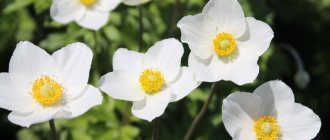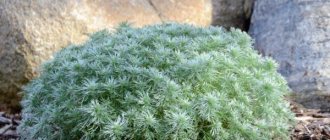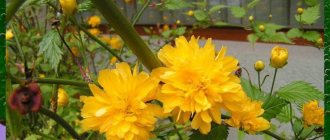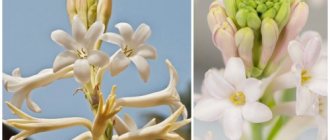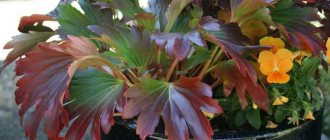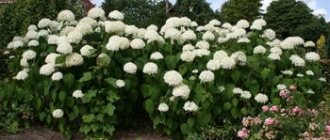Types and varieties of anemone, appearance
The genus anemone is part of the Buttercup family. Another name for the plant is anemone (windflower), given to the plant because of the ability of the petals to sway with the blow of air. Anemone leaves are also thin, feathery, and sway easily in the wind.
The flower is perfect for open ground, so it has long been cultivated as an ornamental plant. Japanese anemone (japonica) came to Europe through China and Japan. It belongs to the group of autumn-flowering anemones and blooms from mid-summer to mid-autumn. Breeders market varieties with different names: hybrid anemone (hybrida), autumn anemone, Hubei anemone. All varieties are suitable for open ground.
Anemone flowers can be of different sizes, they have from 5 to 20 petals, they are double or semi-double, arranged symmetrically in a circle. Petal colors: white, pink, lilac, purple, yellow, blue. In total, more than a hundred varieties of anemone are known.
Japanese anemone (photos of samples are on each packet of seeds), along with other decorative anemones, is presented in an assortment of colors:
- white flowers in varieties Velwind, Honorine jaubert;
- pink Japanese anemone: Mont rose, Margaret, Headspen abudance, Lady glamor;
- the Prinz Heinrich variety has a beautiful pinkish-lilac hue;
- The Japanese anemone Pamina, varieties Profyuzhn, Bressingham glow, Kriemhilda have lilac and purple flowers.
Description of Japanese anemone
Japanese anemone is a rather delicate crop belonging to the Ranunculaceae family. Today there are more than 100 varieties of culture. Despite this diversity, all existing Anemone species share common characteristics. A distinctive feature in this case is a fairly strong and slender stem, the height of which can reach 1 m. The leaves are of a rich shade; no support is required.
The bud includes from 4 to 20 petals. After the flowering period, you can observe the appearance of fruits that resemble nuts in appearance. It is important to take into account the fact that plants belonging to the Buttercup family are poisonous. That is why, if juice gets on the skin, a burn may occur.
Benefit
Anemones are common in landscape design. Japanese autumn anemone, photos of which can be seen on thematic websites, is used in various elements of flower beds. Anemone petals fluttering in the wind look appropriate on stone slides, along paths in ridges, and in combination with other plants. Combinations of anemones with rhododendrons, geraniums, and hydrangea are especially successful.
Reproduction of Japanese anemone
Propagating plants is difficult. This is primarily due to the fact that with the vegetative method of propagation, the root system can be easily damaged, as a result of which recovery can continue for 12 months.
After the root system has been divided, it is recommended to carefully treat the sections using charcoal. If necessary, plants can be propagated by layering, which are separated from the side shoots of the mother bush and rooted.
Application
Japanese anemone decorates the garden from summer to late autumn. Anemone is a versatile plant for mixed flower arrangements due to its delicate color palette, height and long flowering time. Pink, lilac, purple flowers stand out against the background of yellowing trees and shrubs. Groups of anemones fit perfectly into a natural style garden landscape.
Anemone is also used in medicine, but with caution: like all buttercups, the plant is poisonous.
In medicine
Some types of anemone are used as an astringent, bactericidal, and anti-inflammatory agent. The plant is poisonous, so making something from it yourself is not recommended.
At home
For its winter hardiness and beauty, anemone is valued as an ornamental garden (outdoor) plant. Many varieties are good for cutting and are used in bouquets for interior decoration.
In cosmetology
Traditional medicine recommends using an alcohol tincture of anemone to treat dermatoses; the plant is also used in the treatment of fungal diseases. On the other hand, if prepared incorrectly, anemone can be harmful to health, so it is better to choose alternative, safer plants.
Growing anemone in the garden
Growing anemones cannot be called easy for beginning gardeners. But experienced amateur flower growers can easily cope with this process. The difficulty lies in reproduction. There are several ways to propagate anemone: by seeds, bulbs, and dividing the rhizome. They all have their own characteristics and difficulties. You need to know how to preserve planting material, how to get a healthy plant from it that will delight you with beautiful flowering.
Preparing the landing site
The placement of flowers in the garden must be treated very responsibly. The planting site should be protected from the wind by planting trees with an openwork crown and buildings. Anemones do not like too much sunlight; they prefer partial shade. Then you need to start preparing the soil.
The soil should be light, drained, and filled with nutrients. The flower does not like sandy soils. You should not plant an anemone under tall trees with powerful roots, it will not bloom there, no matter how well you care for it.
Planting anemones
Most often, anemone is planted in the spring, but planting can also be postponed until the fall. The soil is carefully dug up, removing the roots of weeds and stones from the planting site. Vegetable compost, manure or other organic matter is used as fertilizer. If the soil is not suitable for planting, you must add lime, ash or dolomite flour as necessary.
Planting must be done in such a way that the anemone can grow and develop freely, and the roots do not compete for water. Planting depth is about 5 cm. It is necessary to water the planted plants. Mulching the soil immediately after planting will help simplify maintenance. The soil will not dry out too much, and the mulch will prevent weeds from multiplying.
How to grow, care, pests and diseases
To thrive, the plant requires fertile, loose soil, moderate light levels and soil drainage. Drainage is made from brick fragments or small pebbles. The soil is also loosened using sand. The top soil layer is mixed with wood ash to avoid excessive acidification of the soil.
Reproduction is possible in several ways: tubers, rhizomes, stem cuttings, seeds. The most common methods are rhizome and tuberous. Rhizomes for planting are cut in the spring. Each segment should have several growth buds. Before planting, the tubers are placed in warm water, left in it until they swell. The swollen tubers are planted in pots, in a mixture of sand and peat, to a depth of about 5 cm. The plant is planted in open ground when the sprouts have sprouted.
Autumn-flowering plants, such as Japanese anemone (herbaceous plants for open ground), are divided into 2 groups according to the method of wintering: tuberous - need to be dug up for winter, and rhizomatous, which calmly survive frosts in open ground. The tubers are dug up in the fall, dried and stored in a cool place until the next planting. Some gardeners believe that in the middle zone any varieties can be left to winter in the ground. Before wintering, the ground is covered with a thick (15-20 cm) layer of mulch. For mulch, use peat, fallen leaves or special mixtures.
Flowers are harmed by slugs, caterpillars, nematodes, and fungal diseases. Slugs and caterpillars are collected by hand. Leaves with brown spots affected by the nematode are destroyed. For pests, the plant is treated with potassium soap and sprayed with a solution of metaldehyde. To combat fungi, add sea salt to the soil.
Plant care
Like any plant, anemone needs to be watered, fed, loosened the soil, and saved from weeds, pests and diseases. When applying fertilizer during planting, subsequent fertilizing is necessary only during flowering. For this purpose, compositions with phosphorus and potassium are used. The substances are dissolved in water and a liquid solution is obtained, which is easily absorbed by the soil and absorbed by the roots of the plant.
Don't forget about watering. This is especially important in dry weather. Excess moisture is unacceptable for anemones. The need for watering is determined by the condition of the soil; drying of the top layer requires the addition of water.
Anemone is a large plant, so weeds are dangerous to it only at the beginning of growth, then only large specimens are removed. It is useful to mulch the soil with peat, dry grass or hay, and rotted sawdust. This will help retain moisture and inhibit weed growth. Mulch will protect the plantings in winter.
Varieties of Anemonia
Anemone is a very delicate and unique flower. Different types of this plant can have significant differences.
The most common representatives of this species:
- Japanese anemony - grows up to 1.5 m in height, blooms with white or pale pink flowers;
- Khubeiskaya - pink flowers, height up to 1.5 m;
- Hybrid - grows 90 - 1.20 cm. The flowers are white, each petal is framed with a pink edge, semi-double;
- Tender is a very cute plant. It grows only 5−10 cm in height. It blooms with sky-blue flowers.
All types of autumn anemone grow beautifully alongside other flowers. They are often used for decoration in landscape design. In autumn, during flowering, it has no equal. It can only be compared to a rose. The plant lives well next to flowers such as delphinium, verbena, chrysanthemum, asters. Looks good with gladioli.
If planted next to trees or shrubs that change leaf color in the fall, the effect can be stunning. Delicate flowers will look great against a contrasting background.
Anemonia is beautiful not only during flowering. She decorates flower beds throughout the garden season. It creates an unusual dark green background for other flowering plants. It is especially beautiful in the far corners of the flower garden, when it blooms, the whole garden seems to come to life again on a sunny autumn day.
You should definitely grow autumn anemonia in your garden. She gives him tenderness and well-being.
Popular varieties
Japanese anemone, a representative of the Hubei species, belongs to the autumn Anemone types, blooming quite late. Among its most popular varieties are white and pink varieties, distinguished by excellent external characteristics. The sophistication of this plant deserves the most luxurious names, and breeders do not skimp on compliments of the autumn anemone.
Tiki sensation
A double Japanese anemone that changes color throughout the season. By the end of summer, the Tiki Sensation variety is literally covered with buds in shades of pink and salmon. As the flower opens, the petals fade, gradually acquiring the purity of a white leaf. With the arrival of the first cold weather, they turn pink again. This unique variety is well acclimatized and suitable for planting in the Moscow region without additional shelters or complex care.
The variety has a height of 80-90 cm, is frost-resistant and can easily tolerate winter frosts without additional shelter. Japanese anemone "Tiki sensation" is adapted for use in bouquets and is an excellent bouquet plant. The variety is recommended to be planted in sunny, well-lit areas.
Monte Rose
Frost-resistant Japanese anemone, growing up to 75 cm, with large double flowers of a soft pink hue rising on straight stems. The variety is quite popular and has excellent decorative properties. Flowering lasts 6 weeks, from mid-August to the end of September.
Prince Henry
A medium-sized variety that grows up to 60-80 cm, under favorable conditions reaches 120 cm. The variety blooms from the end of August and is distinguished by the abundant formation of buds. The flowers are large, semi-double, and come in shades ranging from caramel pink to crimson and pale purple.
Crispa
One of the most brightly colored varieties. Anemone forms a bush no more than 60 cm high, compact, with straight stems and unusual corrugated leaves with a cherry border. The flowers have a diameter of up to 7-8 cm, pink, very showy. The variety is frost-resistant and does not require additional shelter in the climate of the Moscow region.
dreamy swan
An unusual Japanese anemone, the snow-white flowers of which first have a simple shape and then become semi-double. This is a magnificent plant that grows up to 50-80 cm in height. The compactness of the form is compensated by the abundant formation of buds. The variety is less winter-hardy than others and has a short flowering period: no more than a month.
Pamina
Bright pink semi-double Japanese anemone with large flowers. The variety has an average height - the stems grow up to 0.7 m, suitable for planting in partial shade or in well-lit areas. "Pamina" has a high growth rate. Suitable for planting in climate zones where winter temperatures do not fall below −29 degrees. The yellow center of the flower contrasts effectively with the fuchsia petals.
Serenade
A semi-double variety of Japanese anemone, growing up to 100 cm in height. Straight stems hold large flowers with a yellow core and expressive petals that curve inward. The dark pink shade of the buds gradually gives way to a more noble and paler shade. The variety is well suited for planting as a background plant, harmoniously shading plantings of low-growing shrubs.
snow whirlwind
A variety with tall stems (up to 120 cm) and large white flowers up to 8 cm in diameter. This is a hybrid suitable for planting in temperate climates, suitable for cutting into bouquets. The contrast of dark green foliage and snow-white buds looks so impressive that literally at first sight it amazes the person contemplating it. “Snow Whirlwind” looks good in combination with decorative shrub plantings, perennial flowering plants, and is suitable for planting in the herbaceous part of the garden.
Koening Charlotte
A popular variety of Japanese anemone, used in group plantings, arrays, as a background plant or as a bouquet flower. “Koning Charlotte” is characterized by a pink tint of petals, a semi-double cup shape, and a stem height of 60-80 cm. The variety is classified as frost-resistant. A seedling in open ground will only need shelter in the first year.
